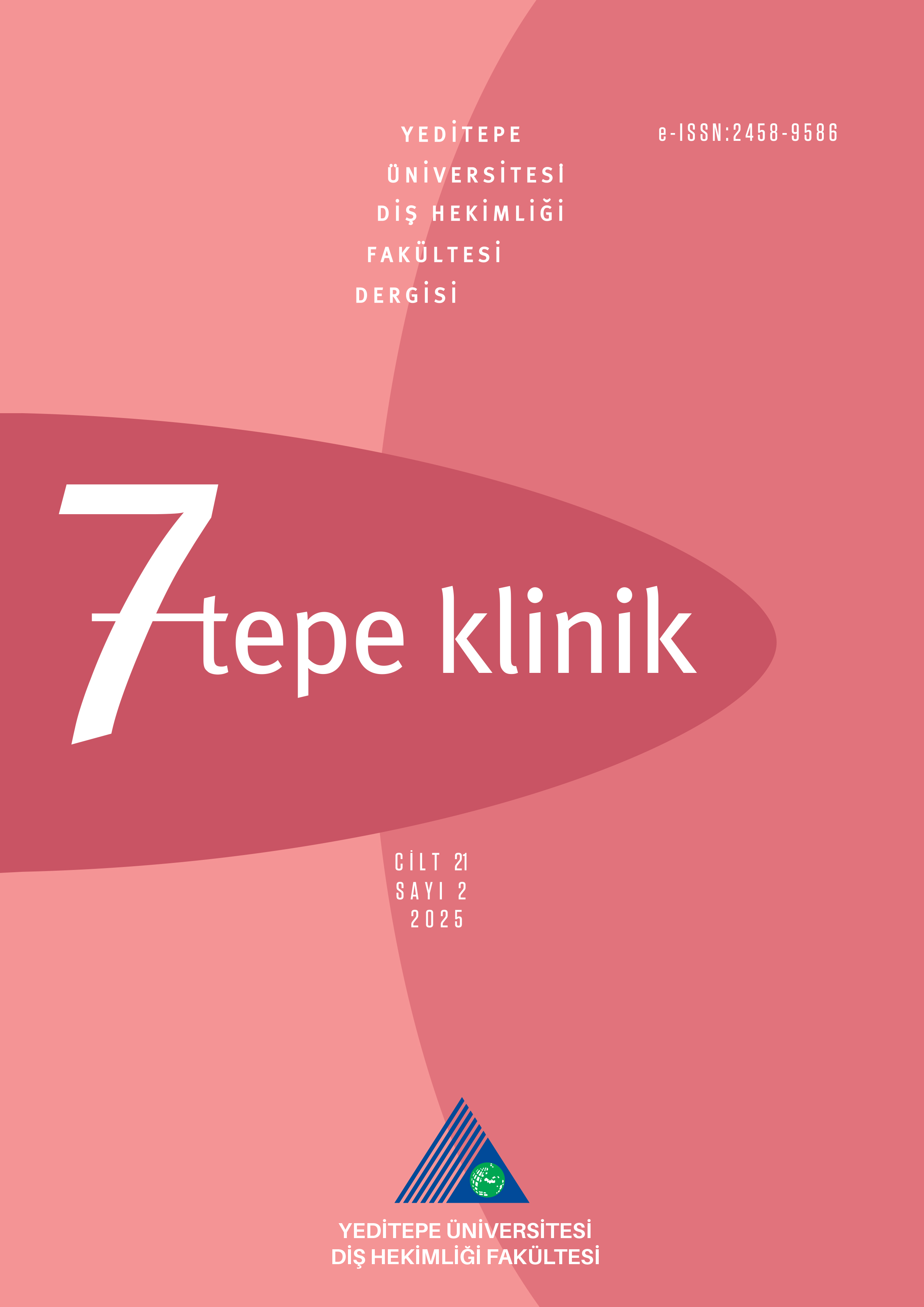Hareketli bölümlü protezlerde planlama farklılıkları ve hataları
Ceyhun Canpolat, Burcu Bal, Zeynep Özkurt Kayahan, Ender KazazoğluYeditepe Üniversitesi, Diş Hekimliği Fakültesi, Protetik Diş Tedavisi A.D., İstanbulGİRİŞ ve AMAÇ: Hareketli bölümlü protezlerin doğru planlanması hasta memnuniyetini ve diş hekiminin başarısını arttırmaktadır. Bu çalışmanın amacı, kısmi dişsizlik tiplerinin yaygınlığını belirlemek, dişhekimleri tarafından en yaygın olarak planlanan hareketli bölümlü protezleri saptamak ve planlama ile ilgili diş hekimlerinin bakış açılarını incelemektir.
YÖNTEM ve GEREÇLER: Bu çalışmada İstanbul'un en büyük ilçelerinde görev yapan çeşitli diş hekimliği laboratuvarlarında yapılan ve randomize olarak seçilen 100 hareketli bölümlü protez değerlendirildi. Kennedy sınıflaması, tedavi planlama seçenekleri ve protez komponentleri gözlemlendi. Dişsiz bölgelerin sayısı ve yeri, ana bağlayıcılar, kroşe ve tırnak türleri kaydedildi. Hareketli bölümlü protez planlamasının doğruluğunu değerlendirmek için bir planlama rehberi kullanıldı.
BULGULAR: Kennedy I en fazla görülen dişsizlik sınıflamasıdır (49%). Bölümlü protez komponentleri incelendiğinde, ana bağlayıcıların %27si, kroşelerin %20si ve tırnak seçiminin %59unda yanlış seçim yapıldığı saptanmıştır. Kroşeler için doğru planlama Kennedy I ve Kennedy IIte daha yüksektir (p<0.05). Kennedy sınıflaması ile ana bağlayıcı ve tırnak planlama doğruluğu arasında anlamlı bir fark saptanmamıştır (p>0.05).
TARTIŞMA ve SONUÇ: Bu çalışmanın sınırlamaları dahilinde, hareketli bölümlü protezlerde tasarım hatalarının oranı yüksektir. Tırnakların yanlış konumlandırılması sonucu protezlerin başarısı olumsuz etkilenebilir. Diş hekimleri, başarılı sonuçlar elde edebilmek için hareketli bölümlü protez tasarımının doğru yapılması gerektiğinin farkında olmalıdırlar.
Planning differences and design errors for removable partial dentures
Ceyhun Canpolat, Burcu Bal, Zeynep Özkurt Kayahan, Ender KazazoğluDepartment of Prosthodontics, Yeditepe University, Istanbul, TurkeyINTRODUCTION: The knowledge of correct design and treatment planning of removable partial dentures (RPDs) improves patient satisfaction and the success of clinician. The aim of this study was to determine the prevalence of various types of partial edentulism, to observe the designs of RPDs most commonly planned by clinicians and to examine their perspectives on planning.
METHODS: A total of 100 randomizely selected RPDs that were constructed in various dental laboratories served in the largest districts in Istanbul were evaluated in this study. Kennedy classification, treatment planning options and framework designs were observed. The number and location of edentulous areas, the type of retentive clasps, major connectors, and occlusal/incisal rests were recorded. A planning guide was used in order to evaluate the accuracy of the framework design.
RESULTS: Kennedy I was the most common classification (49%). The incorrect design was 27% for the major connectors, 20% for the clasps and 59% for the rests. The accuracy of clasps was higher in Kennedy I and II cases (87.5%) (p<0.05). There were no significant differences between the Kennedy classification and the accuracy of major connectors and rests (p>0.05).
DISCUSSION AND CONCLUSION: Within the limitations of this study, it can be concluded that there were large amount of incorrect designs of the RPD frameworks. The incorrect position of the rests was very high and this may lead to unsuccessful dentures. The clinicians should be aware of the correct framework design to achieve successful outcomes.
Makale Dili: Türkçe



